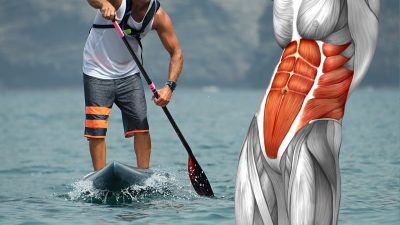For many years, surfing has been the star of water sports, offering a sense of exhilaration, freedom, and connection with the ocean. However, in recent years, a new contender has emerged in the realm of water-based activities – paddle boarding. The two sports, while fundamentally different, share many commonalities and differences that are worth exploring.
What is Surfing?
Surfing is a water sport that involves riding on the forward or deep face of a moving wave, usually towards the shore. This ancient practice traces its roots back to the Polynesian islands and has since become a global phenomenon. From the massive, thunderous swells of Pipeline in Hawaii to the smaller, more manageable waves of Biarritz in France, the sport of surfing has taken many forms and styles. It has grown to include longboarding, shortboarding, bodyboarding, and more.
What is Paddle Boarding?
Stand Up Paddleboarding, or SUP, is a water sport where the participant stands on a large board and uses a paddle to propel themselves over the water. Originating from the surfing culture of Hawaii, SUP has gained popularity for its accessibility and versatility. With paddle boarding, you can explore tranquil lakes, swift rivers, or even ride ocean waves, just like in surfing.
Comparing the Two: Paddle Boarding Vs. Surfing
Accessibility & Learning Curve
Paddle boarding tends to be more accessible and has a less steep learning curve than surfing. Balancing on a paddle board can be easier due to the wider surface area, and the paddle allows for better control and direction. In contrast, surfing requires more strength, coordination, and balance, making it more challenging for beginners to master.
Fitness Benefits
Both surfing and paddle boarding offer excellent fitness benefits. Surfing is a full-body workout involving paddling with your arms, balancing on your board, and using your core and leg strength to ride the wave. Paddle boarding also works out your entire body, with particular emphasis on your core and upper body. Plus, paddle boarding can also offer the calming benefits of yoga if combined with the practice on the board.
Connection with Nature
Both sports provide a unique connection with nature. Surfing often involves a more intense interaction, with surfers becoming part of the wave’s energy. It can also provide an adrenaline rush not typically found in paddle boarding. Meanwhile, paddle boarding is often seen as a more peaceful, contemplative experience. It allows for quiet exploration and closer interaction with marine life in different environments, including calm lakes and rivers.
Versatility
Paddle boarding wins in terms of versatility. While surfing requires specific conditions – waves – paddle boarding can be done on any body of water: oceans, lakes, rivers, and even swimming pools. This versatility extends to the types of activities possible on a paddle board: from SUP yoga to fishing, touring, and racing.
Conclusion
In the paddle boarding versus surfing debate, it ultimately comes down to personal preference. If you seek a high-energy, adrenaline-pumping experience and don’t mind a steep learning curve, surfing might be for you. Conversely, if you prefer a more relaxed, versatile sport that can be enjoyed on a variety of bodies of water, you might want to consider paddle boarding. But why limit yourself? The true beauty of water sports is their variety and adaptability. Consider trying both and discovering the unique joys each one brings. After all, the best sport is the one that brings you the most happiness and satisfaction.





